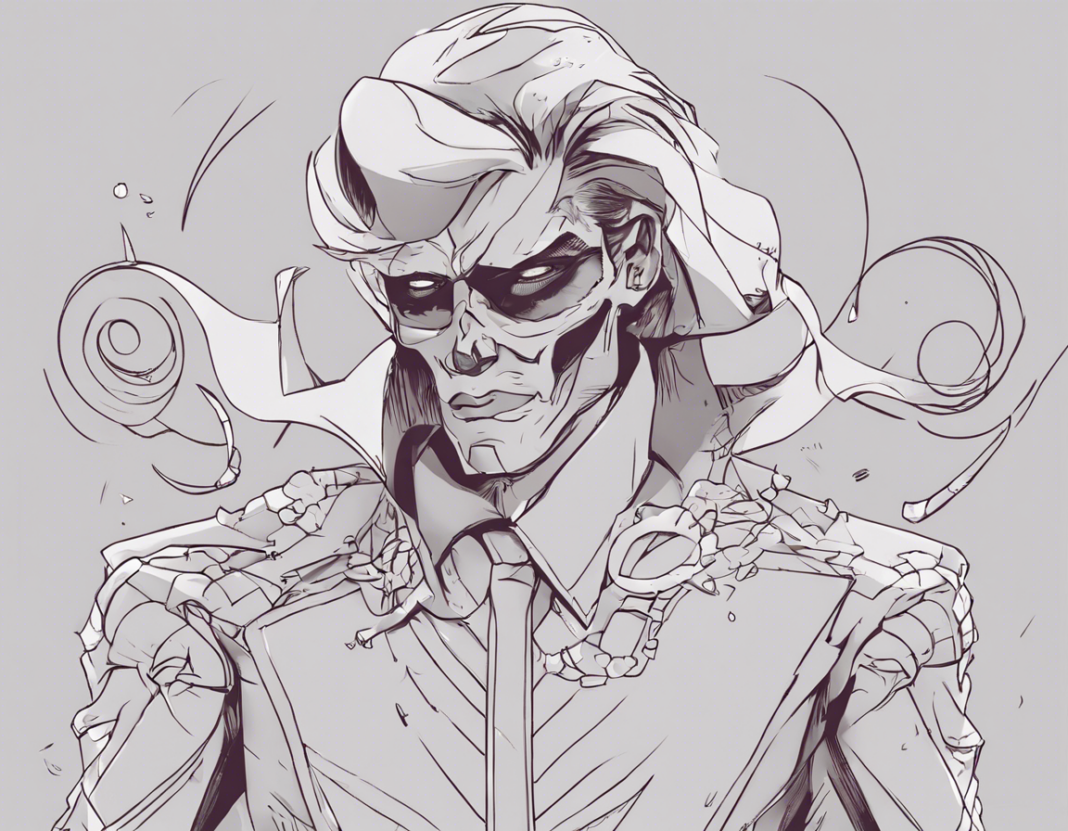In the realm of storytelling, forbidden love has always been a tantalizingly complex and captivating theme. Whether it’s Romeo and Juliet, Tristan and Isolde, or even Beauty and the Beast, tales of star-crossed lovers have continued to enthrall audiences for centuries. However, there’s a specific, compelling subset of forbidden love that adds an extra layer of intrigue and conflict to the narrative – the Villain with a Crush. This intriguing dynamic explores the complexities of attraction, power, and morality, offering a unique perspective on love and desire.
The Attraction of the Villain
At the heart of the Villain with a Crush trope lies the paradoxical nature of the antagonist’s feelings. Unlike traditional love stories where the hero and heroine are inherently good and virtuous, the dynamic shifts when the object of affection is the villain. The allure of the villain character lies in their complexity, their dark charisma, and their inner turmoil. These characters often exude a magnetic appeal that draws in not only the protagonist but also the audience. The forbidden aspect of the love stems from the moral ambiguity of being attracted to someone who is supposed to be the embodiment of evil.
Power Dynamics and Control
One of the key elements that make the Villain with a Crush dynamic so compelling is the exploration of power dynamics and control within the relationship. The villain, by nature of their role, often holds significant power over the protagonist. This power differential can manifest in various ways, whether through physical strength, manipulation, or emotional influence. The interplay between power and desire adds a layer of tension and complexity to the narrative, as the protagonist must navigate their feelings for someone who wields power over them in more ways than one.
Redemption and Transformation
In some iterations of the Villain with a Crush trope, the narrative may explore themes of redemption and transformation. Love has the power to humanize even the most hardened hearts, and the villain may find themselves grappling with conflicting emotions as they navigate their feelings for the protagonist. Conversely, the protagonist may also undergo a transformation as they are forced to confront their own biases and preconceptions about the nature of good and evil. This journey towards redemption and self-discovery adds depth and nuance to the characters, blurring the lines between hero and villain.
Moral and Ethical Dilemmas
Central to the Villain with a Crush trope are the moral and ethical dilemmas that the characters must face. The protagonist may find themselves torn between their feelings for the villain and their sense of duty or justice. Can love truly conquer all, even in the face of seemingly insurmountable obstacles? The villain, too, may be forced to confront their own actions and choices, questioning the validity of their beliefs in the face of newfound emotions. These ethical quandaries serve to enrich the narrative, posing difficult questions about the nature of love, forgiveness, and redemption.
Examples in Literature and Pop Culture
The Villain with a Crush trope has been a prevalent theme in literature and pop culture, captivating audiences with its forbidden allure. From classic tales of gothic romance to modern retellings in popular media, this dynamic has been explored in various forms. Characters like Severus Snape from the Harry Potter series, the Phantom from The Phantom of the Opera, or even Harley Quinn and the Joker from DC Comics all exemplify different facets of the Villain with a Crush trope, each with their own nuances and complexities.
Exploring the Psychology of the Villain
To truly understand the Villain with a Crush trope, it’s essential to delve into the psychology of the villain character. What drives their actions, their desires, and their obsessions? Are they capable of genuine love, or is their affection merely a manipulation tactic? The layers of the villain’s psyche offer a rich tapestry of motivations and contradictions, shedding light on the complexities of human emotion and connection. By peeling back the layers of the villain’s persona, we gain insight into the deeper themes of love, redemption, and the triumph of the human spirit.
Conclusion
In the realm of storytelling, the Villain with a Crush trope stands out as a captivating exploration of forbidden love, power dynamics, and moral complexity. Through the lens of this dynamic, audiences are invited to challenge their perceptions of good and evil, love and desire, and the redemptive power of human connection. As we navigate the intricate web of emotions and conflicts inherent in this trope, we are reminded of the enduring allure of forbidden love and the transformative impact it can have on even the darkest of hearts.
Frequently Asked Questions (FAQs)
1. What makes the Villain with a Crush trope so compelling?
The Villain with a Crush trope is compelling due to its exploration of complex emotions, power dynamics, and moral ambiguity. The interplay between love and villainy offers a nuanced perspective on the nature of desire and redemption.
2. Are there variations of the Villain with a Crush trope?
Yes, the trope can manifest in various forms, from unrequited love to toxic relationships to redemptive arcs. Each variation adds depth and complexity to the narrative.
3. How does the Villain with a Crush trope challenge traditional storytelling norms?
By placing the villain in a position of romantic interest, the trope subverts traditional hero-villain dynamics, prompting audiences to reconsider notions of good and evil.
4. Can the Villain with a Crush trope convey positive messages about love?
Despite the forbidden nature of the love, the trope can convey messages of redemption, transformation, and the power of love to transcend boundaries.
5. What are some cautionary aspects to consider when portraying the Villain with a Crush trope?
Creators should be mindful of romanticizing toxic relationships or glorifying abusive behavior. It’s important to handle the complexity of the dynamic with sensitivity and nuance.

